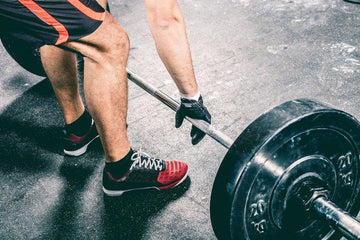

Should you Train Everyday for Maximal Muscle Gains?
Table of Contents
Should you Train Everyday for Maximal Muscle Gains?
Weight Training – How Much Is Too Much?
“Go Heavy or Go Home.” This is the gym slogan that been used for years in the bodybuilding community for years. Many of the former Mr. Olympian bodybuilders trained Monday thru Saturday and would take Sunday off. On the other hand, there were great bodybuilders like Dorian Yates that believed in training heavy but took more rest days. The era of Dorian Yates training with few sets and using massive weights fueled bodybuilders to train heavy. Who has not watched a training video of Ronnie Coleman or Dorian Yates and has not wanted to kick up their training intensity. If you train heavy, then you need to need to rest. There are some that believe that you can’t overtrain and other who think that one can start overtraining in a week.
Some of the most common symptoms of overtraining include:
• Chronic fatigue
• Increased risk of injury in the skeletal, muscular, and nervous systems
• Muscle soreness and tenderness
• Prolonged recovery from exercise
• Impaired muscular strength
Training Heavy Everyday Zaps Your Nervous System
Overtraining is characterized by a reduction in peak performance, in part, due to altered neuroendocrine function. The key to making consistent progress in the gym is to prevent your nervous system from getting fried and making steady gains. The latest research published in the International Journal of Sports Physiology and Performance reported powerlifting results in greater neuromuscular fatigue compared to Olympic lifting. So don’t be a superman and try and train heavy every day. For example, researchers examined athletic performance with either a strength or power workout consisting of 3 exercises. The workouts were as follows:
-Strength workout: 4 sets of 5 reps for the barbell back squat, split-squats and push-press.
-Power workout: 4 sets of 5 reps for speed squats, split-squat jumps, and power-press.
Maximal voluntary contraction decreased following the strength session and remained suppressed at 24 hours while it remained unchanged following power training. Psychological stress symptom responses were higher for the strength session compared to the power session. Ultimately, this study showed that strength sessions take a higher toll on the body and are likely to compromise performance 24 hours post-session. This means lifters should incorporate both strength and power training in their workouts to alter the amount of stress placed on the nervous system. Combining both heavy and light weight, explosive lifting seems to be a good way of preventing overtraining. Based on the study, going heavy every day without including some lite sessions is a sure way to start overtraining.
Six Days of Twice a Day Training Heavy and you’re Screwed
In the latest study published in the Journal of Strength and Conditioning Research, fourteen male and nine female athletes participated in a six-day intensified strength training micro-cycle. This is one of those hardcore training programs you find in the fitness magazines. The subject’s trained twice a day, morning (~9 a.m.) and afternoon (~3 p.m.), on six consecutive days, resulting in a total of 11 training sessions (the morning of training day 4, there were Mid-tests). Overall, the training program consisted of basic multi-joint high-resistance combined with maximal eccentric strength exercises, primarily focusing on lower limb training (i.e., parallel squat). The twice a day, consisting of high-load (85% of a 1RM) combined with maximal eccentric muscle actions (100% 1RM).
At the end of the six days of intensive training, there were significant performance decreases in 1RM test as well as significantly reduced muscle contractile properties. Following three days of recovery, a significant return to baseline values could be observed in 1RM testing. The intense six-day strength training also induced important changes in markers of muscle damage from pre to post-training and after the recovery period. So if you’re the type of lifter that loves training and being in the gym, then you are going to need to alter your training variables to make sure you don’t end of overtrained.
No Need for Fancy Bloodwork-Just Monitor Your Fatigue
There is no reason to purchase fancy blood monitoring tests which can cause thousands of dollars when you can just monitor your overall general energy levels. For example, in one study, testosterone concentration in the blood was directly correlated with the athlete’s energy levels. When the athletes were the most tired, it was directly related to their blood testosterone levels. So if you are feeling run down, then your testosterone levels may be suppressed, and you may need to cut back on your training. So don’t be afraid to take some time off to recuperate from your workouts, your growth depends on it.
Overtraining Can Take up to 6 Weeks
A previous study documented the hormonal responses of an elite Olympic weightlifter over a 21-week period. He was a 27-year-old male weightlifter who holds a national record in weightlifting. The subject had ranked top 5 in the world for several years before this study and ranked first in the world in 2005. At the end of 21 weeks high volume training followed by six weeks of light recuperation weight training, free testosterone peaked while free cortisol remained high after six weeks of taper. It indicated that the physiological stress induced by such training might last for more than six weeks even when the training volume was markedly decreased by more than 50%. Some bodybuilders train high volume but based on the science, once overtraining occurs even reducing the training volume by half still did not lead to a compete for recuperation of anabolic hormones and more importantly cortisol levels had not fully returned to baseline. More research needs to conduct, but it seems like overtraining may take weeks to recuperate from! So it must be stated that the men were natural and not taking any drugs, but if they were taking drugs…they would have enhanced recuperation and could train sooner. So if your natural, take this research in mind that it can take up to 1 week before you are recuperated from an intense leg workout.
Multi- Joint Exercises Require Longer Recovery
There are very few human studies in human but a very exciting new study was recently reported on how long it takes to recuperate from both single and multi-joint exercise protocols. Its been often speculated that one can recuperate from training faster with smaller body parts such as arms or calves faster that larger body parts such as legs or back. The study examined muscle recovery patterns between single-joint versus multi-joint, and upper-body versus lower-body exercises and the utility of perceptual measures (ratings of perceived exertion (RPE) and perceived recovery scale PRS to assess recovery status. All participants completed 10 different exercises. Resistance exercises included: flat barbell bench press, seated dumbbell military press, barbell dead lift, machine leg press, knee extension, machine triceps extension, dumbbell side raises, machine chest fly, and seated machine hip abduction/adduction. A 10-rep max (10-RM) was determined for 6 single-joint and 4 multi-joint exercises (5 upper body and 5 lower body) for male recreational weightlifters. Participants completed a baseline protocol including 8 repetitions at 85% of 10-RM followed by a set to failure with 100% of 10-RM. In a counter-balanced crossover design, participants returned at 24 or 48 h to repeat the protocol. PRS and RPE were assessed following the first and second sets of each exercise respectively.
At the end of the study, the performance decline was most pronounced for the multi-joint movements bench press, military press, deadlift, and leg press) and least pronounced if not non-existent for the single joint exercises. So the single joint exercises such as triceps extensions had faster recuperation than the larger multi-joint exercises such as the leg press and deadlift. A shocking finding was that there was also a tendency for the lower body exercises to recover faster than the upper body that stands in contrast to the advice that lower body parts needs more recuperation time that would require longer recovery periods. Eighty percent of participants completed within 1 repetition of baseline for all exercises at 48 h except bench press (70%) and deadlift (60%); suggesting 72 h of recovery should be implemented for multi-joint barbell lifts targeting the same muscle groups in slower recovering lifters. There was a lot of subject variability in the subjects, but the scientist suggested that 72 h of recovery should be implemented for multi-joint barbell lifts targeting the same muscle groups. So just to be on the safe side, it seems that 72 hours is the optimal recuperation times for training multi-joint exercises. So I hope these tips point you in the right direction for your training. Don’t be afraid to take some time off and you will be amazed at how fast you will get bigger and stronger. Remember, you grow while resting not while training in the gym.
Korak, John A.; Green, James M.; and O’Neal, Eric K. () “Resistance Training Recovery: Considerations for Single vs. Multi-joint Movements and Upper vs. Lower Body Muscles,” International Journal of Exercise Science: Vol. 8: Iss. 1, Article 10.
Alves Souza RW, Aguiar AF, Vechetti-Júnior IJ, Piedade WP, Rocha Campos GE, Dal-Pai-Silva M. Resistance training with excessive training load and insufficient recovery alters skeletal muscle mass-related protein expression. J Strength Cond Res. 2014 Aug;28(8):2338-45.
Ahtiainen JP, Lehti M, Hulmi JJ, Kraemer WJ, Alen M, Nyman K, Selänne H, Pakarinen A, Komulainen J, Kovanen V, Mero AA, Häkkinen K. Recovery after heavy resistance exercise and skeletal muscle androgen receptor and insulin-like growth factor-I isoform expression in strength trained men. J Strength Cond Res. 2011 Mar;25(3):767-77.
Ching-Lin Wu, Wei Hung, Shin-Yuan Wang, Chen-Kang. Chang. Hormonal responses in heavy training and recovery periods in an elite male weightlifter.Journal of Sports Science and Medicine (2008) 7, 560 – 561
Howatson, G., Brandon, R., & Hunter, A. M. (2015). The Response To, and Recovery From Maximum Strength and Power Training in Elite Track and Field Athletes. International Journal of Sports Physiology and Performance. In Press.

















